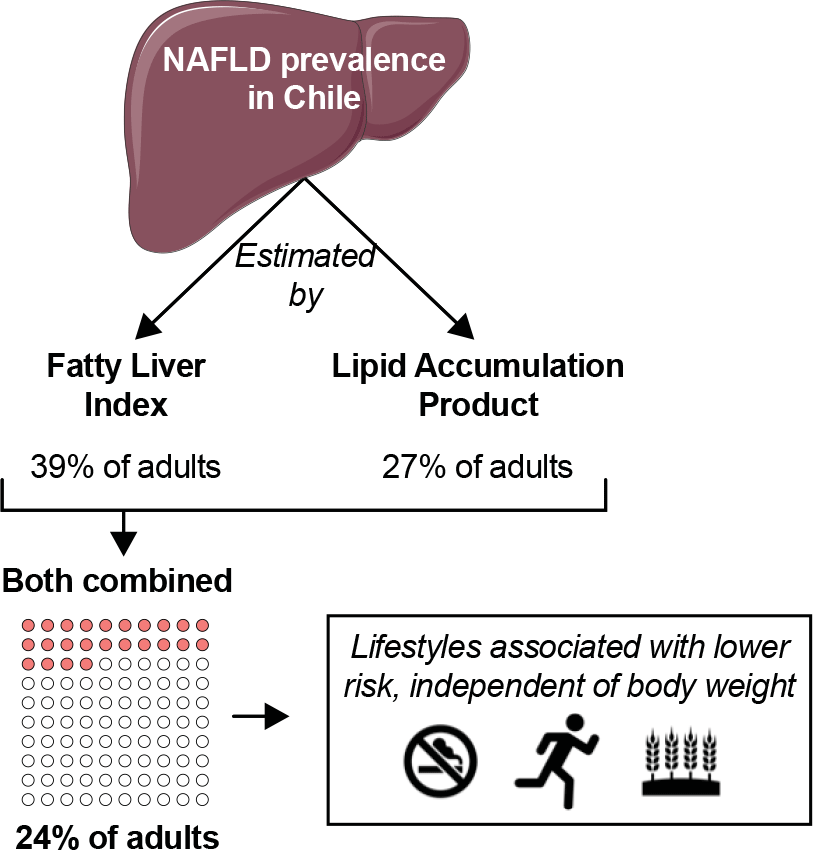Article contents
Prevalence of non-alcoholic fatty liver disease and its association with lifestyle habits in adults in Chile: a cross-sectional study from the National Health Survey 2016–2017
Published online by Cambridge University Press: 09 January 2023
Abstract

Non-alcoholic fatty liver disease (NAFLD) represents an excessive fat accumulation within the liver, usually associated with excess body weight. A liver biopsy is the gold standard for diagnosis, but it is inapplicable in population-based studies. In large populations, non-invasive methods could be used, which may also serve to identify potential protective factors. We aimed to (a) estimate NAFLD prevalence in the adult population in Chile by using non-invasive methods and (b) determine the association between the presence of NAFLD and lifestyle habits. The National Health Survey of Chile 2016–2017 was analysed. We included individuals aged 21–75 years, without infectious diseases nor risky alcohol consumption. NAFLD was detected by either fatty liver index (FLI; considers circulating TAG, circulating γ-glutamyl-transferase, BMI and waist circumference), lipid accumulation product (LAP; considers sex, circulating TAG and waist circumference) or their combination. Lifestyle habits were determined by questionnaires. We included 2774 participants, representative of 10 599 094 (9 831 644, 11 366 544) adults in Chile. NAFLD prevalence (95 % CI) was 39·4 % (36·2, 42·8) by FLI, 27·2 % (24·2, 30·4) by LAP and 23·5 % (20·7, 26·5) by their combination. The prevalence progressively increased with increasing BMI. Of note, less smoking and more moderate-vigorous physical activity and whole-grain consumption were associated with lower odds of having NAFLD, independently of BMI. At least one out of four adults in Chile is afflicted with NAFLD. Health promotion strategies focused on controlling excess body weight and promoting specific lifestyle habits are urgently required.
- Type
- Research Article
- Information
- Copyright
- © The Author(s), 2023. Published by Cambridge University Press on behalf of The Nutrition Society
References
- 2
- Cited by





